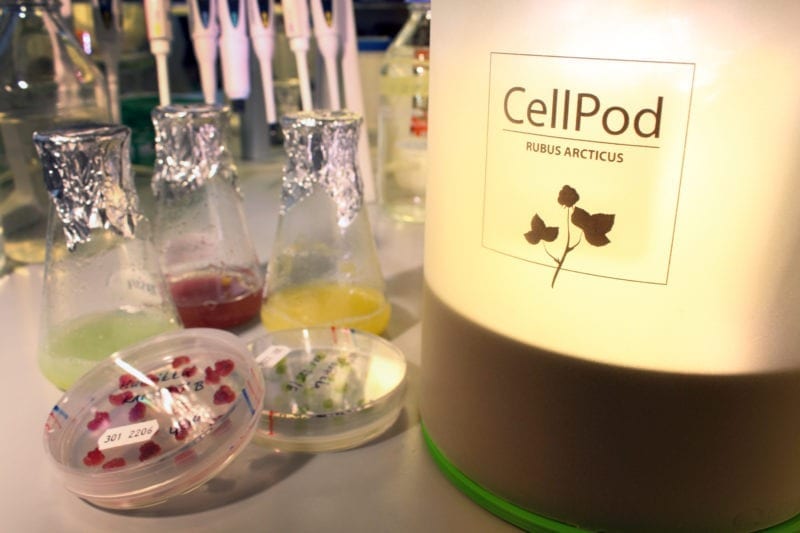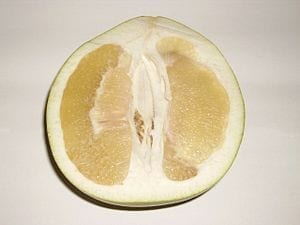3-D printing is growing up fast
On a recent cold afternoon in New York, a young couple with two small children in tow stepped off a busy sidewalk at Manhattan’s Columbus Circle into the quiet modernist home of the city’s Museum of Art and Design. Soon, Sofia Kanso-Robertson, 6, and her brother Iskander, 2, were slowly spinning on a low round platform inside a makeshift 3-D scanner made from a Kinect camera tied to a yellow rope.
A technician from the 3-D printing company Shapeways was sitting close by behind a laptop. She was pulling the rope and moving the digital camera up and down a thin metal pole, capturing a revolving image of the kids and plugging the data into body-mapping software.
After the scan, which took about a minute, the siblings surveyed a selection of materials for their image ranging from plastic to metal. They settled on brass and a week later a miniature 3-D printed version of themselves arrived at their home. “We went in because I was loosely aware of the medium of 3-D printing,” said their father, Andrew Robertson. “But Sofia understood exactly what was going on. She has no barriers or locked-in concepts of what is and isn’t possible. 3-D printing? Why not!”
Like Sofia, 3-D printing is growing up fast. The interactive workshop is part of an exhibit called “Out of Hand: Materializing the Postdigital,” a snapshot of the 3-D printing landscape spread over three floors at the museum. There are many whimsical, practical, serious and artistic examples of digital fabrication on display. They run from a 3-D-printed evening gown, high-heeled shoes and underwear, to a black skeletal frame for a tricycle racer based on a bionic jaw bone and a sculpture of an artist’s breast cancer tumor created from her own digitized MRI scan. The museum’s curator Ronald Labaco says that such designs are now possible “because software has become advanced enough to replicate natural patterns, while manufacturing techniques like 3D printing allow designers to create almost any shape much faster than traditional processes had allowed before.”
3-D printing is an area where art, life and industry inspire each other. Consider that the next-generation LEAP jet engine manufactured by CFM International, a joint venture between GE and France’s Snecma (Safran), has 19 fuel nozzles 3-D printed from a cobalt-chromium alloy similar to materials used in hip and dental implants. The new nozzle is 25 percent lighter and as much as five times more durable than the current nozzle, which must be assembled from 20 different parts. GE Aviation engineers are already testing the first LEAP engine in Ohio.
Their colleagues at GE Power & Water are experimenting with printing parts for massive gas turbines used for generating electricity. The technology will help them test new ideas and designs faster. “We’ve got to spread the word and change the design paradigm that metallurgists, designers and manufacturing teams have had for a long time,” says Jon Schaeffer, senior manager for materials and processing engineering for GE Power & Water. “We are cutting out months in the development cycle with this technology.”
The Latest on: Additive Manufacturing
- Understanding Additive Manufacturing Processeson May 2, 2024 at 2:35 am
This article presents a basic overview of how additive manufacturing (AM) processes work, offering context for material characterization requirements by highlighting the main features of the ...
- The Characterization of Additive Manufacturing Powderson May 2, 2024 at 2:10 am
This article discusses the chemistry of additive manufacturing (AM) powders and the chemical analysis of raw ingredients, recycled materials, and feedstocks. To physically characterize these powders, ...
- State issues $600,000 in grants for additive manufacturing technologyon May 1, 2024 at 7:56 am
Governor Ned Lamont announced on the morning of May 1 that Connecticut is providing six businesses with $100,000 grants to ...
- Phase3D awarded Phase US AFRL contract to advance additive manufacturing quality inspectionon May 1, 2024 at 1:33 am
Phase3D has been awarded a Phase 1 contract by the US Air Force Research Lab (AFRL) that will see it conduct further research into additive manufacturing quality inspection.
- USS San Diego pilots Xerox Additive Manufacturing technologyon April 30, 2024 at 7:50 am
Amphibious Transport Dock USS San Diego (LPD 22) sailors have tested Xerox’s ElemX liquid metal Additive Manufacturing machine for the fleet.
- Rice students develop low-cost cold spray metal Additive Manufacturing machine prototypeon April 30, 2024 at 7:18 am
Students from Rice University have developed a CSAM device that relies on pressure and velocity, rather than temperature, for metal part.
- Apium Additive Technologies commences insolvency proceedings as it searches for new investmenton April 30, 2024 at 5:05 am
The company's current investor is unable to provide the funds that will allow the company to qualify its Apium P400 3D printer for the medical market, the sector Apium is hoping to pursue moving ...
- SPEE3D PARTNERS WITH NEW JERSEY INNOVATION INSTITUTE (NJII) TO BRING COLD SPRAY ADDITIVE MANUFACTURING TECHNOLOGY TO STUDENTS AND MILITARYon April 30, 2024 at 2:00 am
Newark, New Jersey, April 30, 2024 (GLOBE NEWSWIRE) -- SPEE3D, a leading metal additive manufacturing company, announced they are working with New Jersey Innovation Institute (NJII) to bring Cold ...
- Dive into Software Solutions that Support Additive Manufacturingon April 29, 2024 at 7:01 am
Industry experts shed some light on the critical aspects of software for additive manufacturing. From advanced capabilities to the trends in the CAD/CAM/PDM/PLM market, get ...
- UltiMaker Targets Experienced Additive Manufacturers with New Factor 4on April 25, 2024 at 8:43 am
Industrial-grade 3D printer focuses on reliability, with automatic material handling and in-process monitoring.
via Bing News
The Latest on: 3-d printing
- 3D Printing in Biomedical Sensing Technologyon May 2, 2024 at 2:21 am
By Taha Khan May 2 2024 Reviewed by Lexie Corner Three-dimensional (3D) printing is a type of additive manufacturing that constructs three-dimensional objects layer by layer from a digital model. This ...
- Programmable Living Materials Created Using Synthetic Biology and 3D Printingon May 2, 2024 at 2:07 am
Scientists are harnessing cells to make new materials that can grow, repair themselves and even respond to their environment.
- Teachers at Deer Valley create tool using 3D printer to help a student communicate betteron May 1, 2024 at 9:59 pm
Thanks to a 3D printer, the teachers created a tool for the student that ultimately helped her communicate better. At Deer Valley, their motto is “everyone deserves a voice” and that’s exactly what ...
- Hudson preschoolers become community helpers with 3D printing lessonson May 1, 2024 at 9:00 am
A Hudson pre-K class gets early exposure to 3D printing technology and comes up with creative ideas to use the items they create to help their community.
- Marriage of synthetic biology and 3D printing produces programmable living materialson May 1, 2024 at 6:42 am
Scientists are harnessing cells to make new types of materials that can grow, repair themselves and even respond to their environment. These solid "engineered living materials" are made by embedding ...
- Tech grant makes 3D printing more accessible and ecologicalon May 1, 2024 at 6:25 am
What could be more fun and engaging than learning some of the principles of the scientific method and physics by making and launching your own rocket?
- Crafting Programmable Living Materials With Synthetic Biology & 3D Printingon May 1, 2024 at 4:59 am
New study uses 3D printing and genetically modified plant cells to create complex, self-repairing materials that could revolutionize biomanufacturing and construction. Scientists are harnessing cells ...
- Shhh! 3 Secret 3D Printing Stocks Flying Below Wall Street’s Radaron May 1, 2024 at 3:30 am
InvestorPlace - Stock Market News, Stock Advice & Trading Tips One of the best investment strategies for long-term growth is twofold: pick an ...
- Stratasys Wants to Use 3D Printing to Promote Upcyclingon April 30, 2024 at 12:00 pm
Stratasys wants to take consumers’ used clothing to another dimension.
- I’ve been waiting for a 3D printer like the Anycubic Kobra 3 Comboon April 28, 2024 at 1:00 pm
Anycubic's new 3D printer solves a lot of problems for beginners, and has new exclusive Pantone filament colours.
via Bing News











